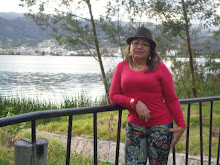A newspaper
article
|
Your diary
|
A dictionary
|
A letter
|
A magazine
|
An advertisement
|
Subtitles at the
cinema
|
A timetable
|
The receipt from a supermarket
|
Instructions for a machine
|
A label of a packet of food
|
A novel
|
The bill in a restaurant
|
The price list of some places
|
An official form of some kind
|
A piece of student´s homework
|
See the topic in a text
|
Look for known and unknown words
|
Schema theory or diagrammatic notes
|
Mind maping or spider notes
|
OTHER EFFECTIVE READING
Read each word very carefully in order to
understand the entire text.
Write the meaning of new words in L1.
Look up unfamiliar words in a bilingual
dictionary.
Look for
linking words that help explain relationship between sentences.
Ask the teacher for help whenever there is an
unfamiliar word.
Translate a difficult section of text into L1.
Think of other words that are similar to the
unknown words.
Read a lot of different things in order to expand
the vocabulary and improve the general
comprehension.
Try to understand the relationship between the
main ideas and supporting details.
Look at titles, subtitles, pictures and other
visuals.
Read a text very quickly the first time to get
the main idea(gist).
READING SKILLS
Skimming: looking through a text quickly to
understand the main ideas or gist. This involves some inference and
interpretation.
Scanning: looking through a text quickly to find words
that match what you are looking for. This doesn’t usually involve
interpretation.
Extensive reading: reading for the informational
content of a text- you are not interested particularly in the language used but
in the information.
Intensive reading: paying attention to the exact words
which are used.



This topic seems too important because reading is a q hambito we must inculcate from small and thanks to the know learn spelling and variety of words
ResponderEliminarIsabella Diaz Londoño 11°2